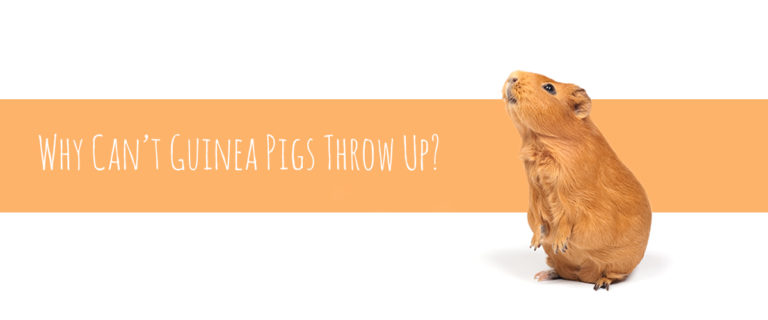When we humans are sick to our stomach, a group of nuclei fires in the brainstem to trigger vomiting. The muscles around the stomach contract, the diaphragm spasms, and the esophagus opens. There goes your lunch. It may seem like an inconvenience but throwing up is our body’s natural way of protecting us when we ingest something contaminated or poisonous. Remember that next time you toss your cookies.
The Physiological Disadvantage
You may have heard that guinea pigs lack a gag reflex. While this is true, it’s a bit more complex than that. Unlike species that can throw up, like primates and carnivores, herbivores’ stomachs aren’t made for moving contents toward the esophagus. Studies show that rodents do experience nausea, but it seems they lack the specific brainstem circuitry necessary to produce the upchuck response. Coupled with less muscular diaphragms and a longer esophagus, guinea pigs are unable to effectively throw up. Rabbits, rats, and even horses are in the same barf-free boat.
If Guinea Pigs Can’t Vomit, What’s That Coming Out of Her Mouth?!
Guinea pigs have a whole bunch of molars hidden in the back of their mouths. While the four incisors in the front are certainly important, the real magic happens in the back behind closed cheeks. This is where guinea pigs really chew their food before it goes down the hatch, and it’s not unusual for them to keep some pig soup stored back there for a bit. When guinea pigs are having trouble with the back teeth, they may spit out their half-chewed food they haven’t yet swallowed. This can even be accompanied by a choking or gagging motion. If you’re suspicious of a tooth problem, watch for things like stinky breath, a wet chin from slobber, grumpy or reclusive behavior, weight loss, favoring softer foods over hay, picking up guinea pig pellets and dropping them, and the incisors wearing diagonally or at a weird angle.
What if Guinea Pigs Eat Something Toxic?
When dogs, for example, eat a stolen chocolate brownie or dirty stock, there are safe ways for pet owners to induce vomiting at home. A little hydrogen peroxide often quickly averts a crisis. The same can’t be said for guinea pigs. In fact, unless the guinea pig is actively choking on an object, trying to get the contents of the stomach to come back up can make matters worse. It must come out the other end. Rhubarb, buttercups, tomato plants, raw sprouted white potatoes, certain types of mushrooms, and grass sprayed with pesticides are common foods that can harm a cavy. If you know your guinea pig has eaten something she shouldn’t, ring your vet for advice.
Time is of essence. In an emergency, you can administer a charcoal tablet by mouth to help absorb toxins moving through the digestive system. Your vet may also recommend a medication to help speed the journey through intestines, or simple olive oil in a pinch. While it’s unlikely she’ll take interest, it’s best to remove all poops during this time to prevent her from re-ingesting anything that could make her sick.
While being unable to puke can be an advantage when it comes to things like anesthesia, it makes things a bit more complicated when guinea pigs eat something scary. If this happens, or if anything seems to be moving the wrong direction, a vet visit is in order. Who knew not being able to hurl could be such a bummer?





